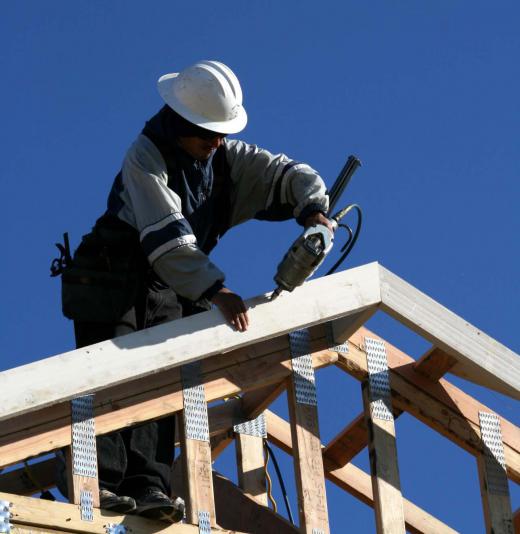One of the most easily recognized of all carpentry tools, the carpenter’s square is an L-shaped set square that is used for plotting right angles during the construction process. Sometimes referred to as a builder’s square, the carpenter’s square is a flat square that is often made with steel or aluminum, and is relatively lightweight. Carpenter’s squares are often employed in the construction of walls, in the installation of roofing, and with a number of furniture construction projects.
The carpenter’s square of today usually measures twenty-four inches by sixteen inches, which is the largest dimensions ever associated with the tool. Typical rafter square and roofing square models in the 19th century tended to measure eighteen inches by twelve inches. Smaller squares are also available, and may be ideal for smaller jobs.

There are several different ways to effectively use the carpenter’s square. The main function of the device is to lay out and mark patterns that are related to framing jobs. This would include such functions as plotting angles for roofing jobs, the construction of stair steps, and making sure that walls are joined at perfect right angles.
Along with plotting layouts of these types, it is also possible to use a carpenter's square to determine the flatness of a plank or sheet of building material. This is actually an excellent way to quickly qualify materials before purchase or use in a building project. Since many projects require flat building materials in order to be constructed properly, this simple method of checking will prevent the builder from utilizing materials that are slightly warped.

There are essentially three sections of the typical carpenter’s square. The longer arm of the square is referred to as the blade. This section is slightly wider than the second shorter arm of the carpenter’s square, which is called the tongue. The outside corner where the tongue and blade join is known as the heel.
In order to help make calculations quick and easy, the surface or face of the carpenter’s square is equipped with measurements. While in times past, the measuring medium employed was strictly linear, many carpenter’s square models today will also include metric dimensions as well. A carpenter’s square can be purchased at any hardware store, as well as any building supplies retail center.

